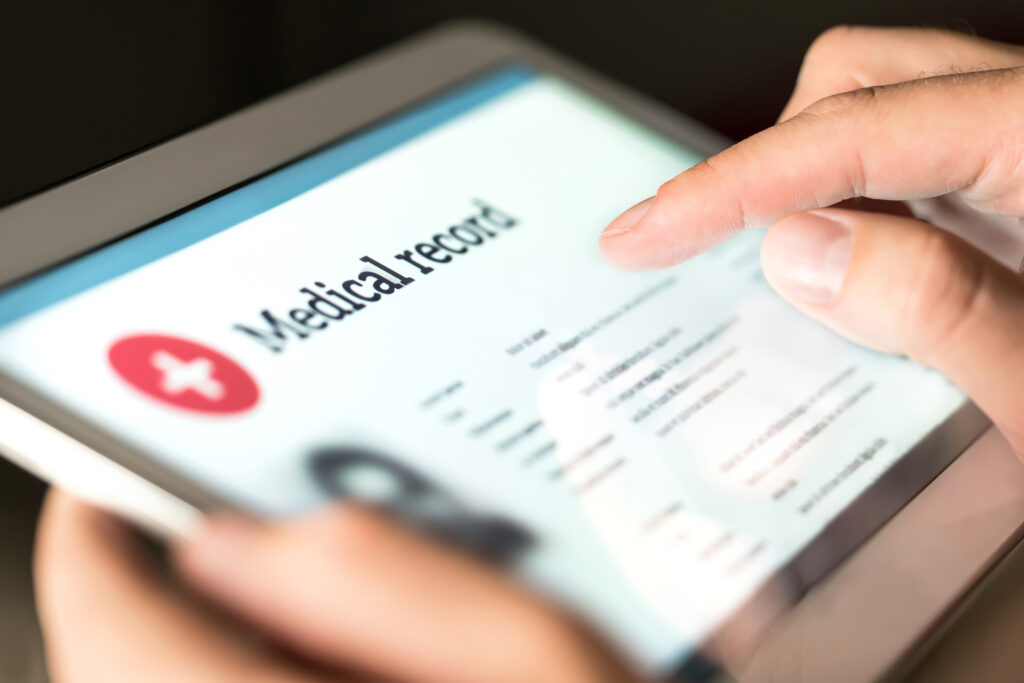Recent legislation mandated uploading of radiology results to My Health Record. The currently implemented approach imposes a 7-day delay in the patient accessing their results. This article suggests re-examining the benefits and risks of such a delay.
The Modernising My Health Record (Sharing by Default) Act 2025 provides that pathology and radiology corporations must upload diagnostic test and imaging results to the patient’s My Health Record. The Act implements a recommendation of the Strengthening Medicare Taskforce and, albeit with a fifteen year lag, the National Health and Hospitals Reform Commission. Australia joins other countries in opening up patient access to their records, with or without a delay.
The Act provides for an enforced 7-day delay in a patient’s access to their results to provide time for the patient’s general practitioner to consider the results and contact the patient to advise whether and with what urgency there should be an appointment to discuss the result. During passage through Parliament, this delay was generally supported by providers, but opposed by consumers. The Act provides that Rules made under the Act can require immediate upload for some or all pathology and imaging results, and last week the Australian Digital Health Agency announced that most pathology results will be available to patients as soon as they are uploaded to My Health Record.
Withholding a patient’s results for a limited time prioritises the central role of the general practitioner as an interpreter of diagnostic information, and as manager of a patient’s care path. The assumption is that the general practitioner will deal with this sorting and assessment function in an appropriate time frame and that there is no cost to the patient in the delay in receiving the GP advice. Withholding information until the practitioner can notify the patient reduces the likelihood of the general practitioner being approached unnecessarily by patients anxious about their results.
Our reflection on this issue was stimulated by this experience of the one of the authors:
- on 28 December 2024 a chest x-ray was ordered by the general practitioner;
- on 30 December 2024 the x-ray was performed; and
- on the same date the radiologist provided a report to the general practitioner which advised that ‘the possibility of a mass cannot be excluded and urgent CT examination is recommended for better detail’.
The radiologist’s report was not accessible to the patient until 6 January 2025, the date of a patient-initiated appointment with the GP, and coincidentally, when the radiologist’s report was available to the patient.

Balancing autonomy and risks
A fundamental principle of bioethics is respect for the autonomy of the patient. Prima facie, this suggests that the patient should be given the right to receive, and make a decision about, their diagnostic results as soon as the information is available. But no principle of bioethics is without trade-offs. Does the patient have the competence to make a decision? Does the immediate provision of diagnostic information risk creating unnecessary anxiety and hence breaching another bioethics principle of non-maleficence?
The policy decision about whether to impose a time lag on information release involves implicit assumptions about:
- the proportion of patients who will check the information before the general practitioner has had time to consider and advise them;
- the proportion of those who will panic/experience anxiety and contact the general practitioner unnecessarily (in the eyes of the practitioner), thus causing an additional cost to the general practitioner and the health system; and
- The incidence of high consequence conditions where an urgent consultation or an immediate visit to an emergency department is the right response to the diagnostic test.
The larger group b is, the greater the risk/costs to both patients, in terms of unnecessary anxiety, and the health system in terms of an additional burden on general practitioners. There may be generational differences in the proportion in groups a and b, with a higher proportion of younger, more Internet-oriented patients looking at their results, but a lower proportion of them contacting the general practitioner as they seek information from the Internet to understand their results. Similarly, the larger group c is, the more immediate release is the appropriate policy. Even if group c is quite small (as is probably the case), the benefits of immediate information to patients might outweigh risks.
The role of technology
The idea that the only way of reducing patient and system burden is to impose a delay in information release fails to take account of developments in technology. For a given test, it is obviously possible to report what the test is about — what it is for — and whether the result is within the normal range. This routine information provision can be implemented immediately and helps improve patient decision making.
The use of either algorithmic or generative artificial intelligence creates new options for managing release of information to the patient. It is now possible to make a tailored response to provision of diagnostic results: what might the patient look for (eg in terms of symptoms) as part of that? What questions might the patient ask their GP? Importantly, the software and algorithms used would need to be registered with the Therapeutics Goods Administration.
Whether the shift from direct information provision to an automatic AI-driven interpretive or diagnostic response raises a host of questions which the roll out of artificial intelligence is bringing to the fore, not least, who is accountable if the advice is wrong?
The policy response in Australia to date has been a timid one and assumes no technological ability to reduce either patient or practitioner burden. It imposes a delay between when the patient’s information is available to the general practitioner and when is it available to the patient. This implicitly weights the burden to the system of ‘unnecessary’ imposts on general practitioners and/or a patient’s anxiety, over the patient’s right to information, and ignores the benefit to more health literate patients or those exposed to urgent high consequence results from early information.
Technological solutions can be used to reduce the numbers in group b above, changing the balance of burdens and benefits. New technology can and should be used to ensure more appropriate balancing of the risks of a 7-day delay in releasing a patient’s information to them.
Dr Stephen Duckett is an Honorary Enterprise Professor in the School of Population and Global Health, in the Department of General Practice and Primary Care, and in the Melbourne Institute at the University of Melbourne. An economist, he is a Fellow of the Academy of the Social Sciences in Australia, and of the Australian Academy of Health and Medical Sciences. He was made a Member of the Order of Australia in January 2023 for significant service to public health policy and management, and to tertiary education.
Dr Sarah Duckett is a researcher at King’s College London where she recently completed her PhD in Risk Analysis. Her research focuses on foundational issues in risk analysis, and risk communication.
The statements or opinions expressed in this article reflect the views of the authors and do not necessarily represent the official policy of the AMA, the MJA or InSight+ unless so stated.
Subscribe to the free InSight+ weekly newsletter here. It is available to all readers, not just registered medical practitioners.
If you would like to submit an article for consideration, send a Word version to mjainsight-editor@ampco.com.au.

 more_vert
more_vert
Even with medical training, I don’t want immediate access to some high stakes test results. There is no value in receiving abnorma results before any treatment can be discussed. For many people, early access can be anxiety-provoking and potentially psychologically harmful. Some patients may misinterpret innocuous results or conversely may have access to serious findings without any treatment plan or support in place. That risk should outweigh the perceived need some patients have for a misplaced sense of control
Just as important is patients having access to results of diagnostic tests in public hospitals. The present system relies on doctors in the hospital reviewing results, which does not always occur.
Patients should have immediate access to their results as soon as they become available. Unfortunately, many GPs do not routinely review pathology results or read correspondence from specialists. With a growing number of GPs working part-time, often only two days per week, critical information is too often delayed or overlooked.
Patients have both a right and a need to be included in all correspondence regarding their medical care. Every patient should automatically receive a copy of all results and specialist letters. This practice would not only improve transparency but also reduce preventable harm caused by communication failures.
The personal experience of one of the authors illustrates this serious gap in practice; despite a radiologist directly contacting the GP about an urgent finding, the GP failed to inform the patient. Such omissions undermine trust in the health system and can endanger lives.
There is nothing worse for a patient than discovering that urgent results have been withheld or shared only among clinicians with no personal accountability for follow-up. The evidence–practice gap, often referred to as the treatment gap, remains wide in usual medical care, perpetuated by complacency and clinical inertia. Unless patients are fully informed and actively involved in their care, these failures will persist, that is the reality.
Let’s be clear: no one here is questioning the matter of patient’s rights to access medical record.
It is the issue of perceived/actual delay in gaining that access.
Under FOI and OAIC you can get access, (sometimes) at a cost and after some time when information is processed and explained.
Having test results, is at the end of the day, getting raw data. All results from investigations should be views via a prism so as to understand the reasons for the test, the results and implication of these results.
Many self-referred testing sites (eg DNA profiling) actually provides some form of explanation and context to the results they supply, albeit often superficial and not always correct.
Blood tests and radiologist reports does not always comes with explanation in lay-person terms nor provide context to the results supplied.
If the 7 day delay was to be removed, we need to both look at the reason for implementing it, and the reasons for removing it.
I am not convinced that instant knowledge makes anything better or smoother. In the era of instant access and information at our fingertip, the consumers are often not much better educated, aware or curious enough in seeking in knowledge in most cases.
Particularly relevant when we know nothing is perfect, including blood test and x-ray report. The older the person is, the more likely something abnormal (but not necessarily serious or relevant) will be found. If one does enough tests, one out of 20 to 1000 tests will get an abnormal result even if the person have nothing wrong with them.
If a person “knows” the test result is not normal, how would they react? Would it mean they get faster or better attention, or that they will more likely to attend to their followup appointment?
Similarly if the person “knows” the test result is normal, would their reaction be any better or rational? Would they attend or respond to a review appointment any better when the results are all normal but the doctor remain worried?
Be careful what we wish for
They’re all good points and the move to more autonomy and less paternalism in healthcare is needed
However – bioethics principles need to be supported by a capable and accessible workforce.
I also note that example fell over the typical holiday period where access to a GP is even more limited than the poor performing normal.
My fear is that, to use the chest xray example above, on receipt of that alarming information and without the timely access to a GP or explanation of the urgency – patients in this situation will understandably turn to the emergency department – who are overwhelmed already with both emergency care and increasing primary care presentations.
I support patient autonomy BUT we need the service capacity and infrastructure to support this FIRST. There is clear potential for harm to patients needing emergency care and ethically, introducing this without the capacity to manage this breaches “First Do No Harm”.
We can do this with innovative models of care, changes in funding arrangements and supported by digital health